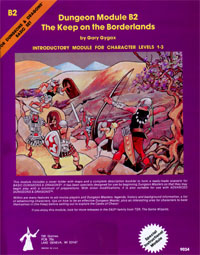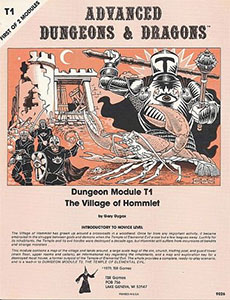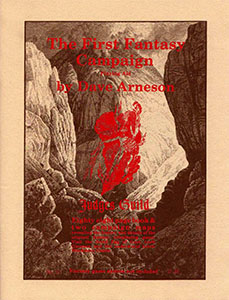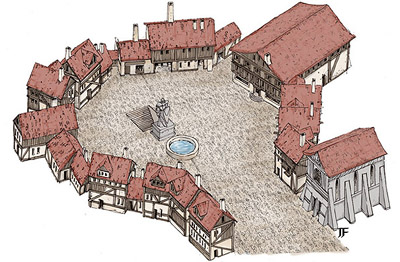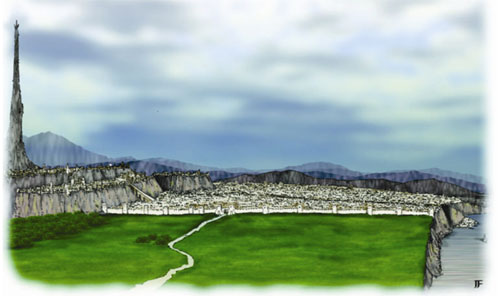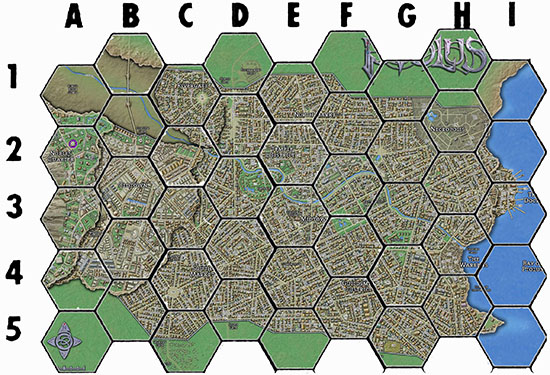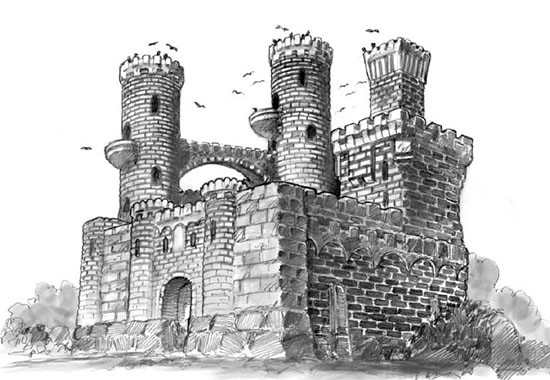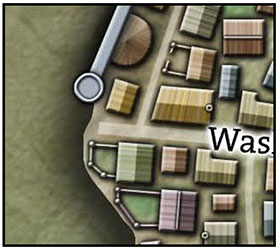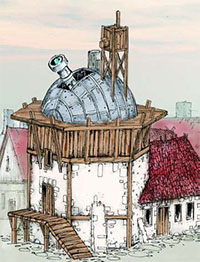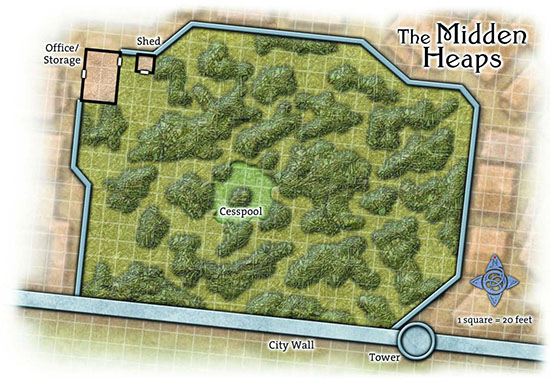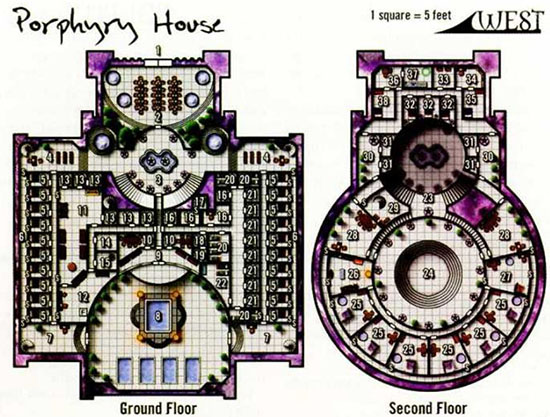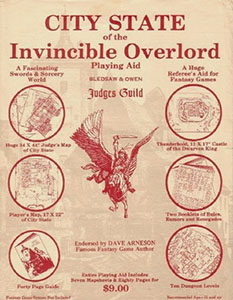 In our quest to understand urbancrawls, let’s turn our attention now to the Judges Guild. Despite a recent resurgence, I think that most people still vastly underestimate the seismic influence they had on the early development of the hobby: They were experimental. They were groundbreaking. They were cutting edge. And a lot of the stuff that was revolutionary when they did it had become “business as usual” in the hobby just a few years later. A lot of it remains business as usual even today.
In our quest to understand urbancrawls, let’s turn our attention now to the Judges Guild. Despite a recent resurgence, I think that most people still vastly underestimate the seismic influence they had on the early development of the hobby: They were experimental. They were groundbreaking. They were cutting edge. And a lot of the stuff that was revolutionary when they did it had become “business as usual” in the hobby just a few years later. A lot of it remains business as usual even today.
(This was most recently impressed upon me afresh when I realized that the hexcrawling procedures in AD&D were based almost entirely on the material developed by Judges Guild: The structures from OD&D were essentially abandoned completely.)
CITY STATE OF THE INVINCIBLE OVERLORD
City State of the Invincible Overlord is not only the first city supplement ever published, it’s also one of the first adventure modules to be published (being predated only by Palace of the Vampire Queen and the original version of The Lost Caverns of Tsojconth).
The first thing I note as I page through the book is that Bob Bledsaw and Bill Owens have a very clear concept of how this material will actually be used at the table. There’s a definite, utilitarian structure to everything they present. Unfortunately, what their practices actually were – what specific procedures they would have used when running the City-State – are unclear almost to the point of being an enigma.
The key for City State of the Invincible Overlord is organized by street. For example, the description of the city begins with a list of all the notable locations on Barter Street:
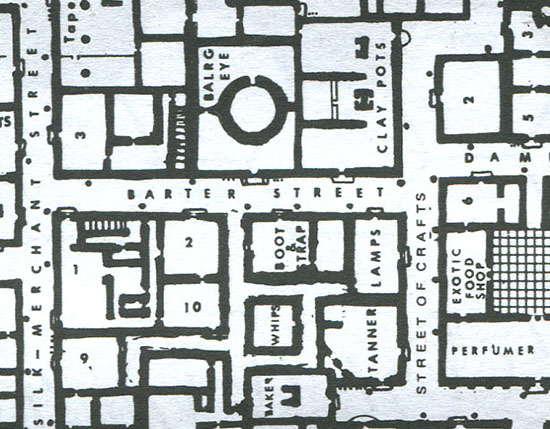
Each location entry generally consists of notable NPCs and a brief description. These are not terrible different from what you’d find in a city gazetteer today and not particularly helpful from a structural or procedural standpoint.
There are, however, two points of interest to be found here: First, each street has an encounter keyed to it. For example, Barter Street:
PROB 38% of being surrounded by Street Urchins demanding 1 CP each to go away
According to the standard procedures hidden away on page 5, these encounters are “rolled on alternate turns (on the turn that a normal encounter is not rolled)”. In order to check for the encounter, you roll 1d6. If you roll a 1, you then roll the percentile check of the keyed encounter.
What constitutes a normal encounter is, as far as I can tell, not explained. (We’ll have to turn to the Ready Ref Sheets for that, which we’ll do in a moment.) Also unexplained is what constitutes a turn. In OD&D there were both underworld turns (10 minutes), wilderness turns (1 day), and combat turns (1 minute). (Although, to be fair, OD&D itself is pretty vague about which type of turn is used in many situations.)
For our purposes, this sort of detail isn’t particularly relevant. What would be nice to know, however, is exactly how Bledsaw and Owens handled movement at the table: Were the players, in fact, navigating street-by-street? The fact that specific turn-by-turn time was being kept and encounters being generated based on exactly which street they were on during a particular turn rather strongly suggests that they were. (And this is reinforced by guidelines like, “There is a 20% PROB of blockage by Wagons, Horses, and Goods. A 10% PROB exists of an object being dropped from above per turn. Distances 10-60 feet.”)
The second point of interest is that each keyed location includes a Rumor or Legend, such as:
Legend, the Cauldron-Born: A Lich in the Dearthwood is creating an army of Synthetic Giants.
Or:
Rumor: A Djinn is coming south on Constable’s Street.
These are obviously very similar to the rumors we see later in Keep on the Borderlands and The Village of Hommlet. Taken in its totality, however, I think we discover that City State of the Invincible Overlord provides a much richer and more robust urban environment: The players are expected to truly explore the city in order to retrieve the rumors which will propel them towards adventure. And in the process of that exploration, the city will impose itself upon them in the form of encounters.
This basic structure is then supplemented with a variety of ancillary material: Town criers and vigilantes; a sub-system for being questioned by city guards; an entire method for placing advertisements and determining the response; and so forth. Add in little sub-systems for intoxicants, gambling, and the like and it’s not hard to see that the city was a mish-mash of color, information gathering, and carousing.
MODRON
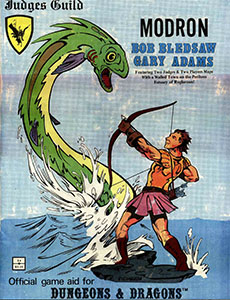 Fast forward a year and we have Modron: Not to be confused with the polyhedral monsters which would later use the same name, this is actually an often-overlooked city supplement written by Bob Bledsaw and Gary Adams.
Fast forward a year and we have Modron: Not to be confused with the polyhedral monsters which would later use the same name, this is actually an often-overlooked city supplement written by Bob Bledsaw and Gary Adams.
It’s notable because it marks an evolution in Bledsaw’s approach to urban supplements: Although encounters are still keyed by street, the gazetteer of locations is now organized by area (Stadium Area, Open Market, The Docks). Rumors and Legends are gone, however, leaving the city as a utilitarian husk colored with the occasional random encounter.
READY REF SHEETS (1978)
In 1978, the second edition of the Ready Ref Sheets finally reveal to us how a “normal encounter” is determined in the city. In practice, it turns out to be an incredibly rich method for procedurally generating urban content.
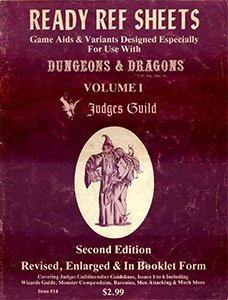 First, check for an encounter. Encounters have a 1/6 chance every other turn. (Thus matching the same rate as dungeon and wilderness encounters, although once again the length of this “urban turn” is left undefined.)
First, check for an encounter. Encounters have a 1/6 chance every other turn. (Thus matching the same rate as dungeon and wilderness encounters, although once again the length of this “urban turn” is left undefined.)
Second, determine the type of encounter: Attacked by Surprise, Attacked, Slanders/Insults, Questions Player(s), Propositions Player(s), or Special Encounter.
This second step is what really makes the whole system work: Basically everything else in the process simply determines who you’re encountering, but this initial step colors the encounter. (Combine it with the “Attack Reasons” table from pg. 74 of City State of the Invincible Overlord and you’re really cooking with gas.)
This is all the Ready Ref Sheets have to offer us, but I think it’s important: Understanding where the procedural content generators are and how they work in a ‘crawl is vital to keep the ‘crawl vibrant and alive over the course of a campaign.
CITY-STATE OF THE WORLD EMPEROR
City-State of the World Emperor is a really weird product.
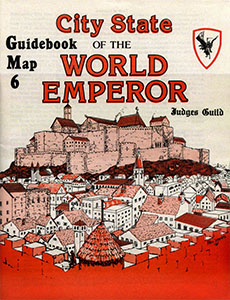 First, it has an entire volume dedicated to 80 pages of generic, unnamed shops. And none of these shops are actually keyed to the map: The GM is supposed to place them wherever they find convenient.
First, it has an entire volume dedicated to 80 pages of generic, unnamed shops. And none of these shops are actually keyed to the map: The GM is supposed to place them wherever they find convenient.
The other significant volume of the set is just a giant mish-mash of completely unorganized information. It includes both a table of “Rumors” and a table of “Random Rumors” (although what the distinction is supposed to be between these categories is left completely unexplained).
Gone are the street-based encounters and the rumors keyed to specific locations. In their place, however, Volume II: Shops has a robust “cache” system: Each location indicates how many caches of loot it possesses, and you can use the cache system to determine where it’s hidden; how it’s hidden; and how much is hidden. This is coupled with the following rejoinder:
As a general state of affairs people in the City State of the World Emperor tend to be a level or two higher than those in the City State of the Invincible Overlord owing to the tougher level of competition. Also since more trade flows through Viridistan the level of cash flow and total of treasure are slightly greater. Beware; since the guards and traps are tougher too!
The impression one is left with is very much of a “hack ‘n slash” urban environment and the expectation seems to be that the PCs will be kicking doors down and looting the premises.
Also of note, however, is that Volume III: Guidebook to the City includes an explicit “Play Guide”. This leads off by saying, “It is important that played characters interact with NPCs.” It then includes a robust system for handling rumors, tracking how long abstract interactions with NPCs take, mechanics for “establishing camaraderie”, and play tips for successfully gathering information (“talk with everybody… encourage the relating of rumors… learn about sudden unusual behavior… concentrate on getting to know persons of one’s own rank, position and interests”). So the collection of information is still clearly placed in center of the urban spotlight and it’s particularly interesting to see the mechanistic way in which these interactions are handled. For example:
One rumor (maximum) can be heard per every two hours in an eatery (food or drink). One rumor per hour can be heard in an inn (food, drink, and beds). Three rumors per hour can be heard in a tavern (drink). One hour of conversation equals four turns of interaction if with different people, or six turns of interaction if with one person. Ten interactions equal one turn. One interaction equals two verbal statements (or questions) and two retorts (minimum). About 50% of rumors are true.
FINAL THOUGHTS ON THE JUDGES GUILD
Here, however, our time with Judges Guild draws to a close. In 1983 they would produce a final city-state product – City State of Tarantis – but this product moved entirely to a modern gazetteer style: These are the books that read like a Baedeker’s guidebook. They provide the backdrop for adventure 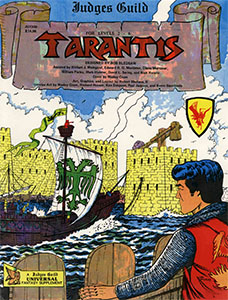 without really giving us anything in the way of structural clues.
without really giving us anything in the way of structural clues.
In reviewing what we’ve learned from the Guild, I’ll start by saying that I’m probably not interested in using strict turn-by-turn timekeeping while exploring a city. The kind of street-by-street navigation that seems to be getting advocated here might be interesting for a short while during an “explore the new city” phase, but I don’t think that it would represent effective pacing in the long run. (Featuring, as it almost certainly would, a lot of decisions that nobody at the table really cares about.)
The idea of keying content to specific streets, however, is an interesting one. Consider the possibility of combining this with target-based movement: When the PCs are leaving or arriving at a location, could we check for encounters keyed to those streets in order to provide color to the urban environment as they move through it on their errands?

